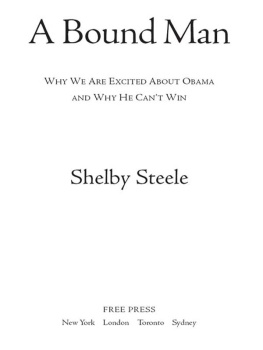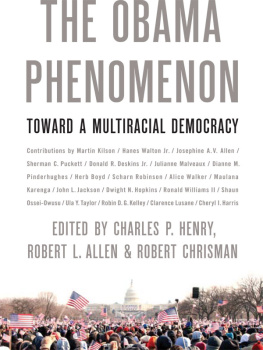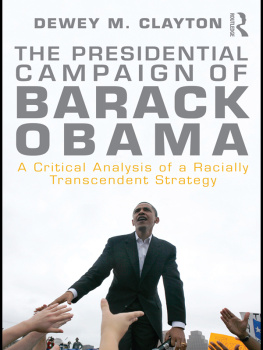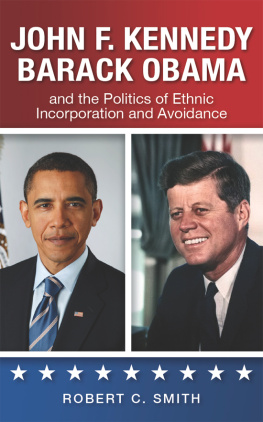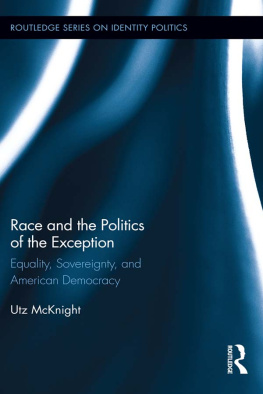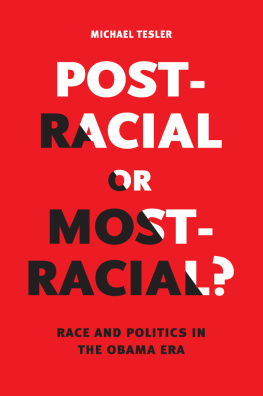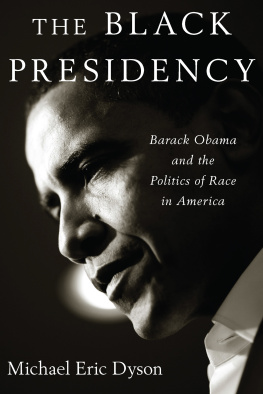THE END OF RACE?

Copyright 2012 by Donald R. Kinder and Allison Dale-Riddle.
All rights reserved.
This book may not be reproduced, in whole or in part, including illustrations, in any form (beyond that copying permitted by Sections 107 and 108 of the U.S. Copyright Law and except by reviewers for the public press), without written permission from the publishers.
Yale University Press books may be purchased in quantity for educational, business, or promotional use. For information, please e-mail sales.press@yale.edu (U.S. office) or sales@yaleup.co.uk (U.K. office).
Library of Congress Control Number: 2011933857
ISBN 978-0-300-17519-6 (paperback : alk. paper)
A catalogue record for this book is available from the British Library.
This paper meets the requirements of ANSI/NISO Z39.48-1992 (Permanence of Paper).
10 9 8 7 6 5 4 3 2 1
CONTENTS
This wasnt supposed to be a book. Several years ago, one of us (Kinder) was about to finish a book. Thats what he kept telling himself and others: Almost finished. Nearly done. The subject of that book was the role of prejudice in contemporary American politics. It was organized around Gunnar Myrdals famous prediction, spelled out in his masterwork of social science, An American Dilemma: The Negro Problem and Modern Democracy (1944). According to Myrdal, white Americans were caught in a dilemma, suspended between their commitment to democratic principles, on the one side, and their belief in the superiority of the white race, on the other. Myrdal was certain that democratic principles would prevail. Prejudice and discrimination were about to disappear.
Kinder referred to the book he was about to finish, with apologies to Spalding Gray, as the Monster in a Box. As Gray did with his incomplete novel, Kinder carried his book with him wherever he went, adding what seemed to him to be indispensable insights, scratching vital notes in the margins, imagining additional crucial analyses, never quite coming to the end. The box was largebut the book (Kinder kept saying) was nearly done.
Then, out of the blue appeared Barack Hussein Obama. Kinder first learned of him from reading his name on a T-shirt worn by his son Jacob, then age twelve. At the time, Obama was an Illinois state senator; Jacob thought Obama should be president. Kinder began to read about him; soon enough, we all did.
Obama posed a problem for the book in the box, which argued that Myrdal was wrong. Obamas remarkable rise to prominence and his historic victory in 2008 did not, by itself, prove Myrdal right. But Kinder clearly had some explaining to do.
With this in mind, we began in the winter of 2009 to collaborate on what we assumed would be a chapter for the book in the box. We started out by comparing the role of race in the 2008 presidential election to the role played by religion in the Kennedy-Nixon contest of 1960. The resulting paper was long and illuminating (to us at least), but it only told part of the story we needed to tell if we were to get at the real meaning of 2008 for racial politics in America. At some point, we came to the realization that we were writing a book. And so we wrote it.
We have many people to thank. Portions of the argument and evidence were presented in Chicago at the annual meeting of the Mid-West Political Science Association and in seminars at Michigan, MIT, and Vanderbilt. On those occasions, we received hard questions, good advice, and welcome encouragement. We especially want to thank Adam Berinsky, Marc Hetherington, Cindy Kam, Tim Ryan, and David Sears. On technical matters concerning the Voting Rights Act and racial polarized voting, we asked for and received fine and speedy counsel from Bernie Grofman, Richard Pildes, David Lublin, and Richard Engstrom. Matt Riddle provided patient and excellent advice on statistical matters. Our understanding of gender and politics owes much to a happy, long-running, and continuing collaboration with Nancy Burns. We thank Reviewer A and Reviewer B for their tremendously helpful reports. Yale University Press has withheld their identities, but we came to know them well, as we grappled with their challenging questions and argued with their alternative interpretations. In the process, we materially modified the manuscript; we would have been foolish not to. We are also grateful to Cindy Kam, Hanes Walton, and Janet Weiss, who plowed through the entire manuscript and presented us with a bushel full of excellent suggestions. In ways large and small, this book is much the better for their efforts. Kinders good friend Lance Sandelands read not a wordnevertheless, he bears some responsibility for what follows. Sandelands is not just a close friend but also a perceptive, sympathetic, and wise critic; he seemed happy to talk, again and again, about our project. In the end, have we succeeded in persuading Sandelands? Not for us to say. But we can say that the book is much clearer and stronger than it would have been without all those conversations. Finally, Samuel Weiss is a fine writer and a splendid editor. We know this because, having read all of our sentences, he proceeded to eliminate quite a few, fix others, and convert awkward constructions into felicitous phrasesand he did all of this cheerfully and diplomatically, despite the Oedipal temptation. Thanks to one and all.
Each election year is a revelationin the way the electorate is consulted, wooed, or baffled; in the way issues are chosen, presented, or evaded; in the demands and promises made, compromises struck, strains felt tacitly or voiced. The nation at once celebrates and mourns itself.
Garry Wills
On a bitterly cold, sun-splashed Tuesday in Washington, before an enormous and delighted crowd, Barack Obama is about to be sworn in as the forty-fourth president of the United States. Among the guests of honor on the inaugural platform sits John Lewis, a veteran of the civil rights movement and longtime congressman from Georgia. Some forty years before, on a quiet Sunday afternoon, Lewis led a dignified, double-file procession of some six hundred American citizens from Browns Chapel up onto the Edmund Pettus Bridge in Selma, Alabama. The march was headed to Montgomery; its purpose was to convince Governor Wallace (and the nation) of the moral necessity of extending the vote to black Americansas a legal right and a practical reality. For their impertinence, the marchers were sprayed with tear gas, knocked to the pavement, and savagely beaten. Lewis slumped to the ground, his skull split open by a troopers truncheon.
As Obama makes his way to the front of the inaugural stand, he glances to his right, notices Lewis, moves down an aisle, and bends to embrace him. On a remarkable day, it is a remarkable moment. In Lewiss time, African Americans were denied the vote, shut out of politics, and scorned and dishonored by their government. In 2008, African Americans had the vote, and they voted in overwhelming numbers for a black man for president. More astonishing still, millions of white Americans did the same. The country had changed.
In his inaugural address, the new president did not dwell on this transformation, but he acknowledged it. Toward the end of his speech, Obama invoked the majesty of democratic ideals. Commitment to the American Creed, he said, is why men and women and children of every race and every faith can join in celebration across this magnificent mall. And why a man whose father less than 60 years ago might not have been served at a local restaurant can now stand before you to take a most sacred oath. The words were fine, but it was enough to marvel at the sight itself: silhouetted against a background of gleaming white marble, a tall, thin, black man, the president of the United States.
Next page


